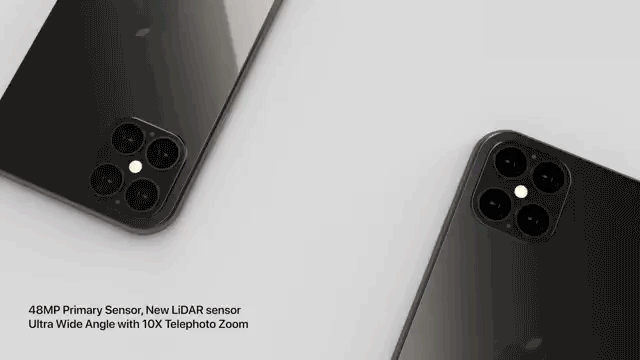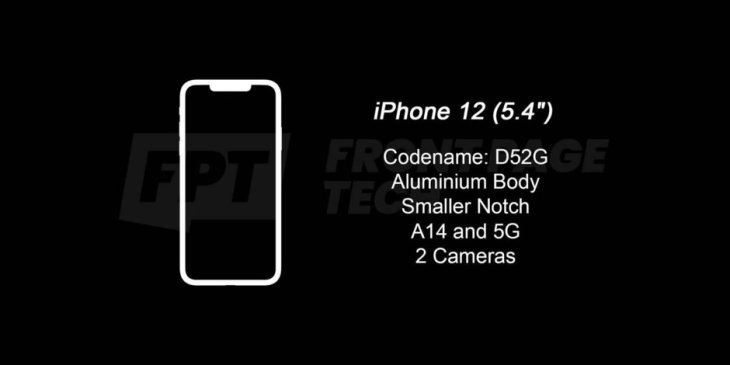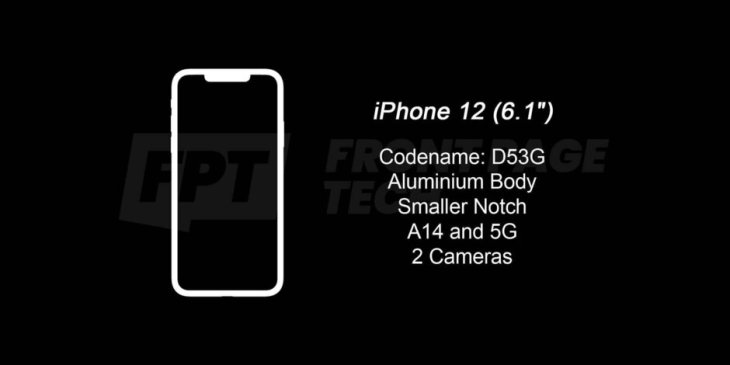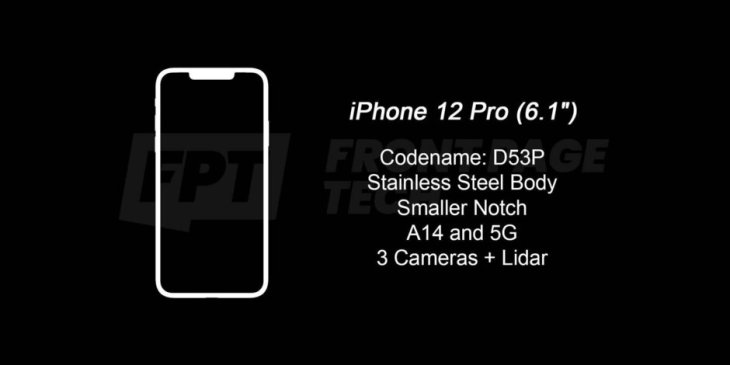This Will Reportedly Be Final Design Of Upcoming iPhone 12 Lineup
Karamchand Rameshwar - Apr 07, 2020

Apple seems to have had a bit of a hard time finalizing the design of the iPhone 12 and iPhone 12 Pro because of the travel ban due to the COVID-19 outbreak.
- OPPO Reno 14 Series Hits India: Launch Date, Cameras, and Specs
- Best Gaming Phones 2025: Top Devices for Mobile Gaming
- Apple Kills Original HomePod, Focusing On HomePod Mini
Apple seems to have had a bit of a hard time finalizing the design of the iPhone 12 series because of the travel ban due to the COVID-19 outbreak.
However, the company's efforts have finally paid off, and the design of the upcoming iPhone 12 line has been finalized.
Although this milestone is achieved a few months later than originally planned, thanks to Front Page Tech's YouTuber Jon Prosser, some key details about the iPhone 12 and 12 Pro have now been revealed.

Apple first introduced the controversial notch design in September 2017 with the iPhone X. The notch then continued to be available on the iPhone XS / XR and iPhone 11 series, and once again, it will be on the upcoming iPhone lineup.
However, according to information collected by Prosser, Apple plans to reduce the size of the notch on its upcoming iPhone. Do not be too excited, because the difference is thought to be very small.

The reason for this change is still a mystery but perhaps related to the new 4-lens camera system that Apple is likely to equip the Pro model. This cluster takes up a significant amount of space inside the device, forcing Apple to lower the size of the Face ID system.

And to ensure uniformity in the iPhone 12 series, the smaller notch will be brought to two other models, iPhone 12 & iPhone 12 Plus.
Another feature that will appear on the iPhone 12 & 12 Pro is 5G connectivity, even though they are not the two most advanced iPhone models. Specific information has not been disclosed, but many previous reports said that only the Pro model supports mmWave technology.

Of course, these iPhone models will come with next-generation A14 Bionic chipsets with significant breakthroughs in performance and energy efficiency thanks to the 5nm manufacturing process.
The iPhone 12 & 12 Plus, codenamed D52G & D53G, will follow the iPhone 11 with dual camera clusters on the back and aluminum chassis.
In theory, if these smartphones look almost identical to the previous generation, they should be called iPhone 11S. But that is not entirely true, as previous reports have indicated that there will be some relatively significant changes in the new product lineup.
For example, the aluminum frame on the vanilla model will have flatter edges. The LCD display, on the other hand, will be replaced by an OLED display, which means that the bezels will be thinner like the high-end iPhone 11 Pro.
As for the 12 Pro and 12 Pro Max codenamed D53P & D54P, they will use stainless steel chassis and also have flat edges as mentioned above. Of course, both will have larger OLED screens and thinner bezels.

Two new high-end iPhone models will also be equipped with a triple-lens camera cluster and a LiDAR sensor. This is probably the most significant difference when comparing last year's iPhone 11 Pro.
iPhone 12 & iPhone 12 Pro price
With the aforementioned upgrades, it's safe to assume that the price of the lineup will increase slightly this year. The following is the estimated selling price of iPhone models that will hit the market in 2020 based on leaked information:
- iPhone SE 2020 / iPhone 9: $399 (around Rs. 30,000)
- iPhone XR: $549 (around Rs. 41,400), reduced from $599
- iPhone 11: $649 (around Rs. 48,900), reduced from $699
- iPhone 12 (5.4”): $699 (around Rs. 52,700)
- iPhone 12 Plus (6.1”): $799 (around Rs. 60,200), increased from $699
- iPhone 12 Pro (6.1”): $1,049 or $1,099 (around Rs. 79,000 or Rs. 82,800), increased from $999
- iPhone 12 Pro Max (6.7”): $1,149 or $1,199 (around Rs. 86,600 or Rs. 90,400), increased from $1,099.
>>> iPhone 12 With A14 SoC Gets Terrific Benchmark Scores On Geekbench
Featured Stories

Mobile - Oct 23, 2025
How Casual Games Are Winning the Mobile Attention War

Mobile - Jul 03, 2025
OPPO Reno 14 Series Hits India: Launch Date, Cameras, and Specs

Mobile - Jun 12, 2025
Best Gaming Phones 2025: Top Devices for Mobile Gaming

Mobile - Jun 12, 2025
Vivo T4 Ultra Debuts with MediaTek Dimensity 9300+ Chipset

Mobile - Jun 08, 2025
Realme GT 7T Review: Power Meets Endurance in Controversial Style

Mobile - Jun 08, 2025
Motorola Edge 60 Set to Debut in India This June

Mobile - Jun 07, 2025
Realme C73 5G Launches in India: Budget 5G Phone Starts at ₹10,499

Gadgets - Jun 07, 2025
OnePlus 13s Makes Indian Debut: Compact Flagship Brings Premium Features at...

Mobile - Jun 04, 2025
Samsung Galaxy Z Fold 7 Ultra: The Next Chapter of Premium Foldables

Mobile - Jun 02, 2025
Comments
Sort by Newest | Popular